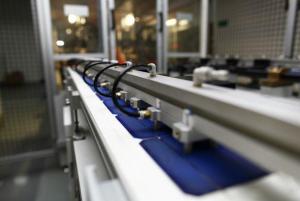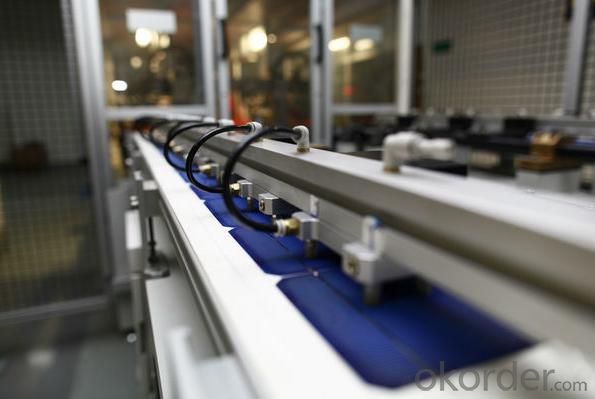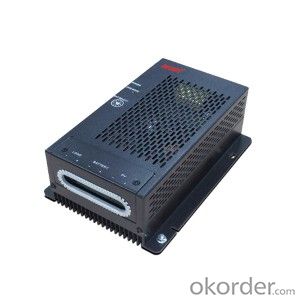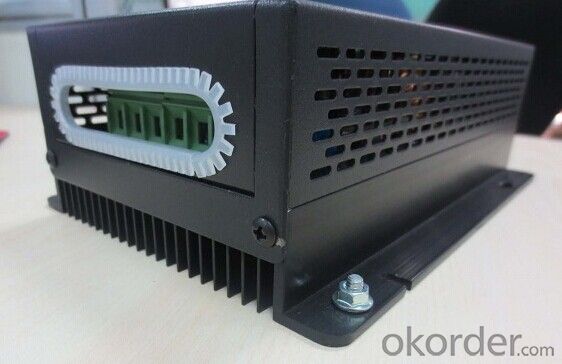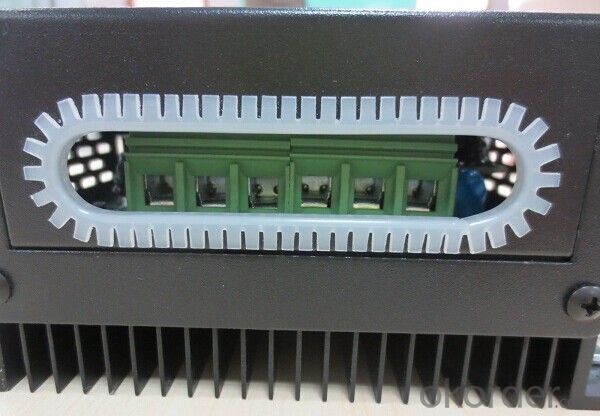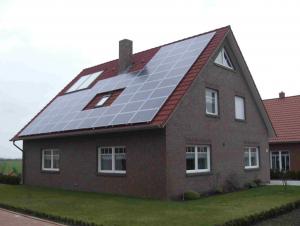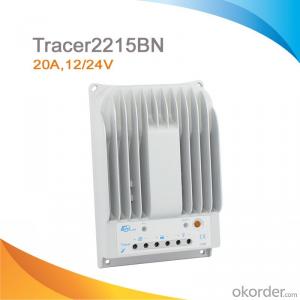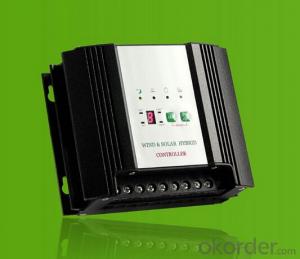Solar Controllers from Thailand Supplier - MPPT Solar Charge Controller 12V 24V 20A
- Loading Port:
- Shekou
- Payment Terms:
- TT or LC
- Min Order Qty:
- 100 pc
- Supply Capability:
- 100000 pc/month
OKorder Service Pledge
OKorder Financial Service
You Might Also Like
12V 24V 20A mppt china solar charge solar controller
PC1000 series solar controller Features:
1. MPPT Solar charge controller 20A,30A,40A
2.An optional battery temperature sensor ensures precise battery charging
3.Built-in MPPT tracker is enquipped in the power inverter to optimize the power transformation.
4.Reversed current protection for preventing equipment damage
5.Automatic battery temperature compensation for long -term reliability
6.Three stage charge control system (bulk,absorption,and float mode) with temperature compensation
7.Autamatic overload protection in both active and passive modes
8. MPPT efficiency max 90%
Detailed Description:
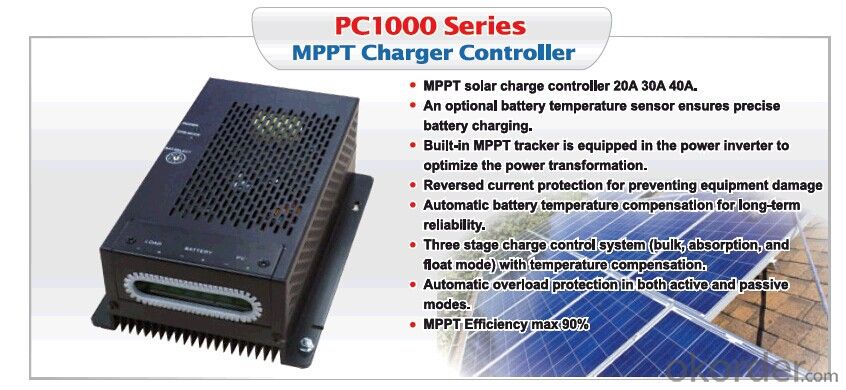
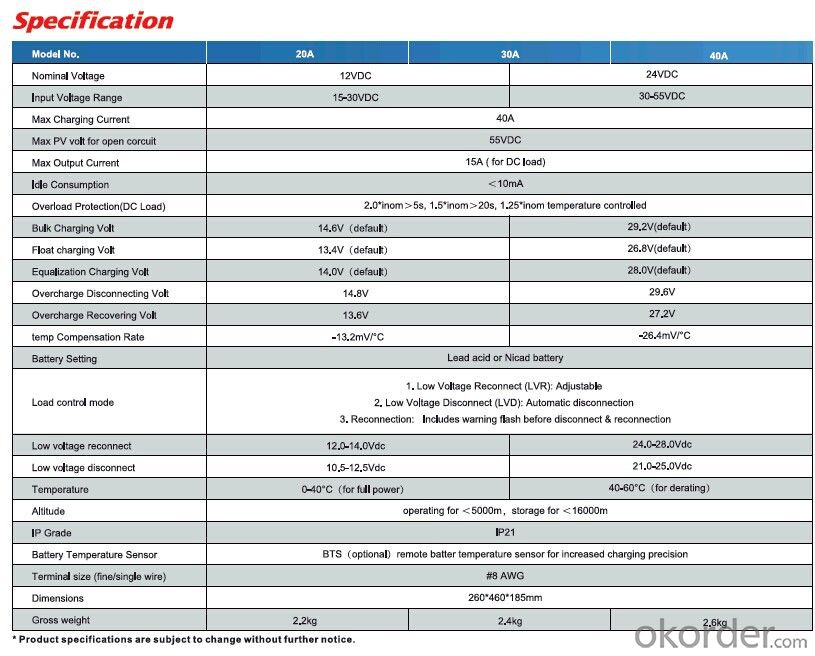
| Model | PC10-2005A | PC10-3005A | PC16-4005A | |
| Default Battery System Voltage | 12V/24V DC (adjustable) | |||
| CONTROLLER INPUT | PV Open Circuit Voltage Range | 16V~30V for 12V battery system / 32V~55V for 24V battery system | ||
| Max PV Input Power(12V) | 300W | 450W | 600W | |
| Max PV Input Power(24V) | 600W | 900W | 1200W | |
| BATTERY | Float Charging Voltage | 13.4V(default)/26.8V(default) | ||
| Bulk Charging Voltage | 14.6V(default)/28.6V(default) | |||
| Equalization Charging Voltage | 14.0V(default)/28.0V(default) | |||
| Battery Temperature Sensor | BTS(optional) remote batter temperature sensor for increased charging precision | |||
| DC OUTPUT | Output Voltage | 11.0~14.3VDC /22.0~28.6VDC | ||
| Max Charging Current | 40A | |||
| Max Output Current | 15A(for DC load) | |||
| Cutoff for Overcharge | 14.8V/29.6V | |||
| Overcharge Voltage Recovering | 13.6V/27.2V | |||
| Cutoff for Low Voltage | 10.5~12.5VDC/21.0~25.0VDC | |||
| Low Voltage Recovery | 12.0~14.0VDC/24.0~28.0VDC | |||
| GENERAL SPECIFICATION | Charge Mode | MPPT,constant current-constant voltage | ||
| Radiating Mode | Automatic cooling | |||
| Working Mode | Four stage: Absorption CC, Absorption CV, Float CC, Float CV | |||
| DISPLAY & PROTECTION | LED indication | Systematic operation, LV indication, LV protection, over charge protection, loads protection, short circuit protection | ||
| Alarm Protections | 2.0*inom>5s;1.5*inom>20s;1.25*inom temperature | |||
| Load control mode | 1.Low Voltage Reconnect(LVR):Adjustable | |||
| 2.Low Voltage Disconnect(LVD):Automatic | ||||
| 3.Reconnection:Includes waming flash before | ||||
| MECHANICAL SPECIFICATIONS | Mounting | Wall mount | ||
| W*H* D(mm) | 260*460*185mm | |||
| G.W(kg) | 2.2kg | 2.4kg | 2.6kg | |
| OTHER | Environmental Rating/IP Grade | Indoor/IP21 | ||
| Operation Temperature Range | 0~40°C(for full power)/40~60°C(for derating) | |||
| Ambient humidity | 0~90% relative humidity(non-condensing) | |||
| Altitude | ≤5000m | |||
| Terminal size (fine/single wire) | #8AWG | |||



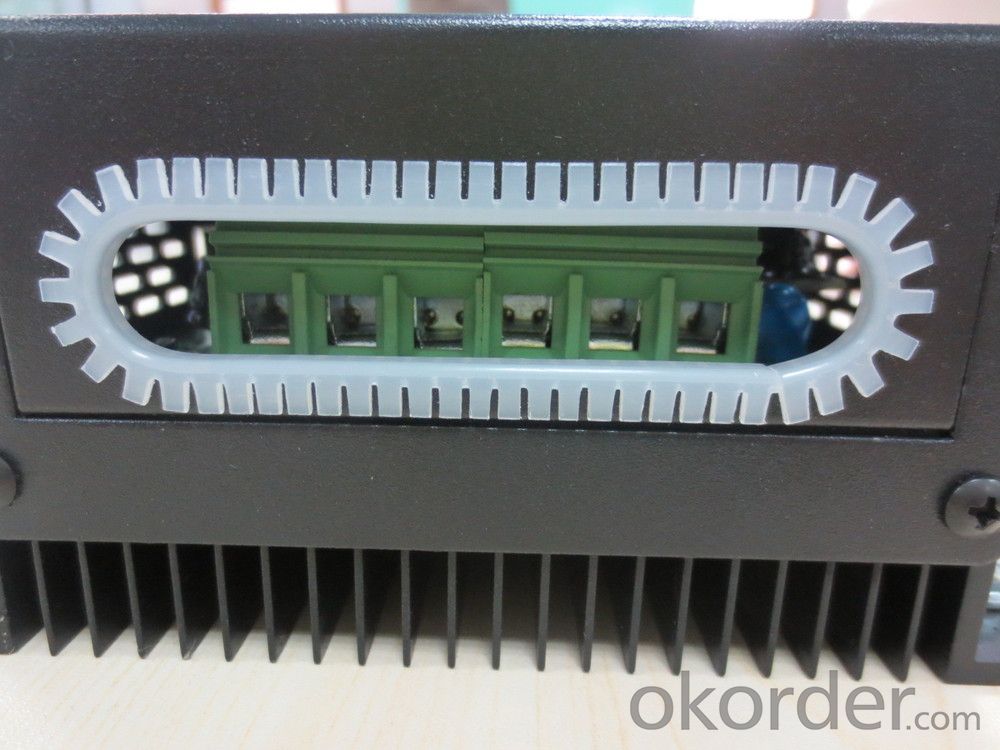
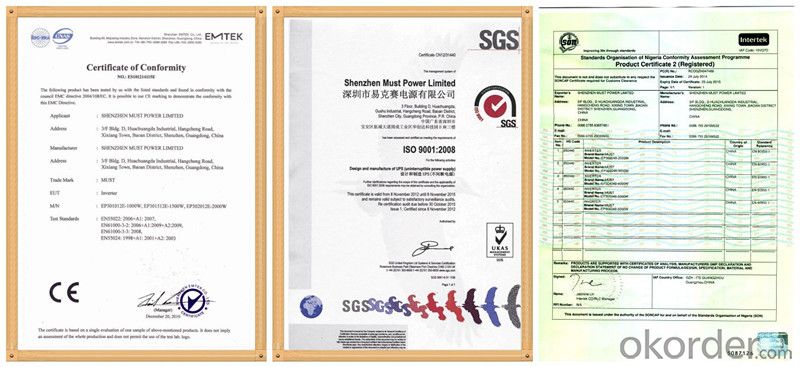
- Q: What is the role of a battery equalization function in a solar controller?
- The role of a battery equalization function in a solar controller is to balance the charge levels of individual battery cells or groups of cells within a battery bank. This function ensures that each cell or group is charged and discharged evenly, preventing any imbalances that can lead to reduced battery performance or premature failure. By equalizing the charge levels, the battery's overall capacity and lifespan are optimized, resulting in more efficient and reliable energy storage for the solar system.
- Q: Can a solar controller be used with a solar-powered wind turbine?
- Yes, a solar controller can be used with a solar-powered wind turbine. A solar controller is designed to regulate and optimize the charging of batteries from solar panels, and it can also be used to regulate the charging of batteries from a solar-powered wind turbine. The solar controller will ensure that the batteries are charged efficiently and protect them from overcharging or discharging, regardless of whether the power source is solar panels or a wind turbine.
- Q: Can a solar controller be used with solar panels that are connected to a solar water pump?
- Yes, a solar controller can be used with solar panels that are connected to a solar water pump. The purpose of a solar controller is to regulate the flow of electricity from the solar panels to the connected device, in this case, the solar water pump. It ensures that the solar panels operate at their maximum efficiency and protects the pump from overcharging or damage.
- Q: Can a solar controller be used with solar-powered camping equipment?
- Yes, a solar controller can be used with solar-powered camping equipment. A solar controller helps regulate the flow of electricity from the solar panels to the camping equipment, ensuring efficient charging and preventing overcharging or damage to the equipment's batteries.
- Q: How does a solar controller prevent overloading of the system?
- A solar controller prevents overloading of the system by regulating the amount of current flowing from the solar panels to the batteries. It monitors the voltage and current levels and ensures that the batteries are charged at an optimal rate without exceeding their capacity. If the system detects excessive current, it automatically reduces the charging rate or disconnects the panels to prevent damage to the batteries or other components.
- Q: Can a solar controller be used with different types of inverters?
- Yes, a solar controller can be used with different types of inverters. A solar controller, also known as a charge controller, regulates the charging process of a solar battery or battery bank by controlling the flow of current from the solar panels to the batteries. On the other hand, an inverter converts the direct current (DC) electricity produced by the solar panels into alternating current (AC) electricity that can be used to power household appliances and other electrical devices. The solar controller is typically connected in between the solar panels and the batteries, while the inverter is connected to the batteries. The solar controller monitors the battery's state of charge and adjusts the charging current accordingly to prevent overcharging or undercharging. It does not directly interact with the inverter. Therefore, the compatibility between a solar controller and an inverter is not a concern as they serve different purposes and operate independently of each other. As long as the solar controller is compatible with the solar panel system and battery bank, it can be used in conjunction with any type of inverter, whether it is a pure sine wave inverter, modified sine wave inverter, or grid-tie inverter.
- Q: Can a solar controller be used with solar-powered indoor aquaponics systems?
- Yes, a solar controller can be used with solar-powered indoor aquaponics systems. A solar controller helps regulate and manage the power generated by solar panels, ensuring optimal charging and usage of batteries. In an indoor aquaponics system, where sunlight may be limited, a solar controller can help maximize the efficiency of solar power utilization, providing a sustainable and eco-friendly solution for powering the system.
- Q: What is the role of a battery temperature sensor in a solar controller?
- The role of a battery temperature sensor in a solar controller is to monitor the temperature of the battery. This information is important as it helps the controller regulate the charging and discharging processes of the battery to optimize its performance and prolong its lifespan. By accurately measuring the battery temperature, the solar controller can adjust the charging voltage and current accordingly, ensuring that the battery is charged efficiently without overheating or overcooling. Additionally, the temperature sensor helps to prevent overcharging or over-discharging of the battery, which can lead to damage or reduced capacity. Overall, the battery temperature sensor plays a crucial role in maintaining the health and efficiency of the battery in a solar power system.
- Q: Can a solar controller be used in a solar-powered electric scooter charging system?
- Yes, a solar controller can be used in a solar-powered electric scooter charging system. The solar controller plays a crucial role in regulating the flow of electricity from the solar panels to the battery of the electric scooter. It ensures that the charging process is safe and efficient by monitoring and controlling the voltage and current.
- Q: How does a solar controller handle variations in solar panel temperature?
- A solar controller handles variations in solar panel temperature by implementing temperature compensation algorithms. These algorithms adjust the charging parameters, such as voltage and current, to optimize the charging efficiency and prevent overcharging or undercharging of the batteries connected to the solar panel system. By continuously monitoring the panel temperature, the controller ensures that the charging process is adjusted accordingly, allowing for efficient and safe operation of the solar panel system.
Send your message to us
Solar Controllers from Thailand Supplier - MPPT Solar Charge Controller 12V 24V 20A
- Loading Port:
- Shekou
- Payment Terms:
- TT or LC
- Min Order Qty:
- 100 pc
- Supply Capability:
- 100000 pc/month
OKorder Service Pledge
OKorder Financial Service
Similar products
Hot products
Hot Searches
Related keywords
